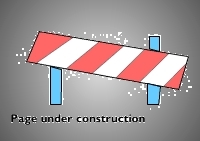Ensign Special Reflex
How to restore a
Serious damaged camera.
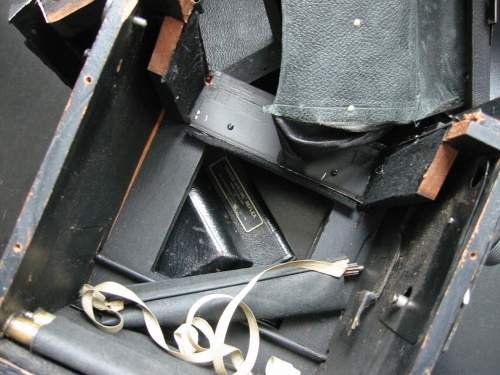
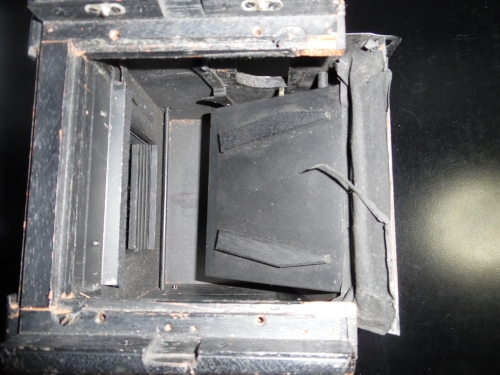
This Ensign camera did not survive a house-party somewhere in Canada. After this disaster the owner was looking for someone to repair the wrack and came to my site. He sent me some photos and was more or less convinced that his question in fact was superfluous. The whole camera house was completely crooked. It was just a bunch of wood and leatherette almost pressed together. This happened some twelve years ago and at that time I did not had the experience I do have now. My answer was that I wasn't able to refurbish the camera and wished him good luck. Some weeks later the postman delivered a package from Canada and surprisingly it contained the crooked camera. The sender wished me a lot of fun with the remnants and suggested to use them for repair or what else. I dropped the camera or what was left of it is a shoebox and forgot about it. Now some month ago I found the shoe box and put it on the shelf so that it should not escape my intension again. Now I wondered how to start this project and how to tackle the damage of the wooden camera house. As I said before I do have a lot more experience now. I learned a lot in the past ten years and each bad looking camera nowadays is a challenge for me to repair. However this is definitely the worst I ever have seen before. My only hope was that almost every part of the camera was in the box. As far as I could see that seemed the fact except the wooden part of the back above the film frame. To find out if the camera's most essential part - the focal plane shutter- could be restored, I connected both sides of the camera together using a wooden lath from a cigar box and started to reinstall the focal plane shutter or what was left of it. This is only possible if the camera has been straitened in its original shape. The focal plane shutter should be able to move freely inside the housing straight in front of the film-frame on the backside. Working on this I found a metal frame inside the housing serving as a mirror house for the reflex mirror and its second function was obvious a sort of light baffle.
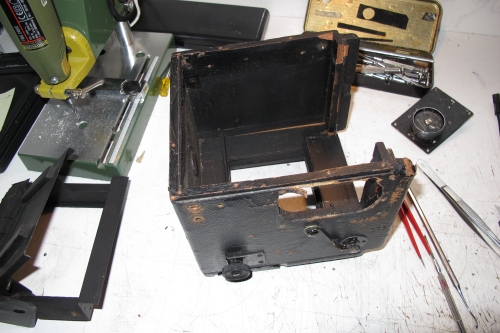
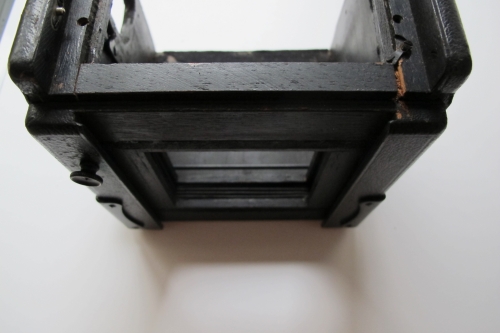
The Ensign Special Reflex Camera housing after disassembling the mirror case and the two blinds and three rollers.
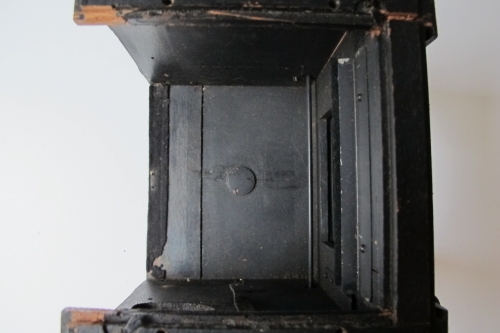
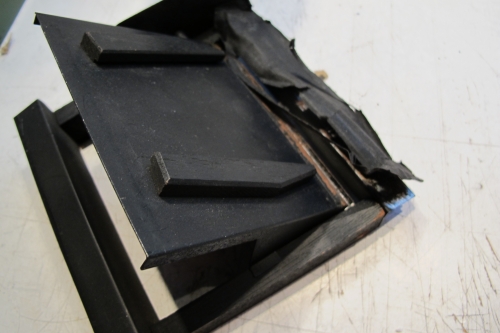
On the left the wooden housing lacking the wooden top connection. On the right the mirror case.
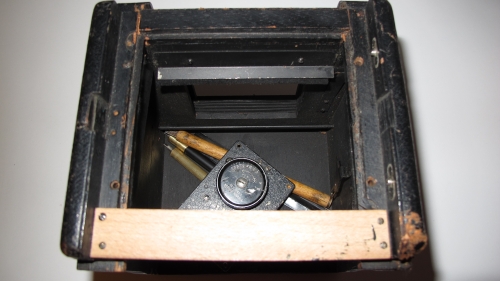
The wooden lath is a temporary solution to hold the camera together. Only then it is possible to remount the rollers and the focal plane shutter mechanism. This set up is necessary to find out if the focal plane shutter works as it should. If this would work out positive then we have to find a way to repair the wooden camera house. First thing first.

The photo above shows three rollers, the friction plate and two blinds. The left roller A is the winding roller attached is blind #1. In de middle you can see the friction plate and the second from right is the middle roller B with the blind #2 attached. The right roller is the lower roller C with attached both straps. Both right rollers are tensioned spring loaded.
The three drawings below show the working of this type of shutter. The lower blind is connected by friction to the straps of the upper blind one. These straps on their turn are connected to the roller C. The slit width is created by winding the upper roller further once the lower blind has reached its end. The straps pull blind 1through the friction plate on roller A thus creating the slit between blind 1 and blind 2. When releasing the shutter, the lower blind 2 is pulled down by the tension of roller C, followed by the slit and then the upper blind follows the slit and closes the film frame again. The exposure has been finished. Blind 1 and 2 are connected again by the friction plate and the focal plane shutter is ready for the next session.
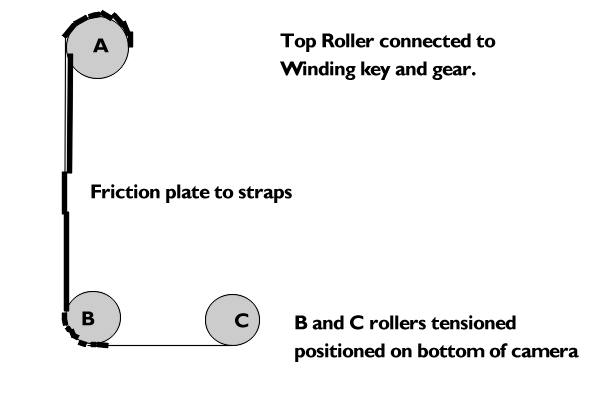
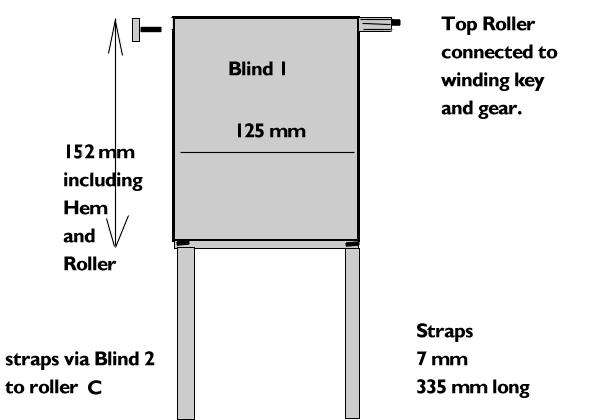
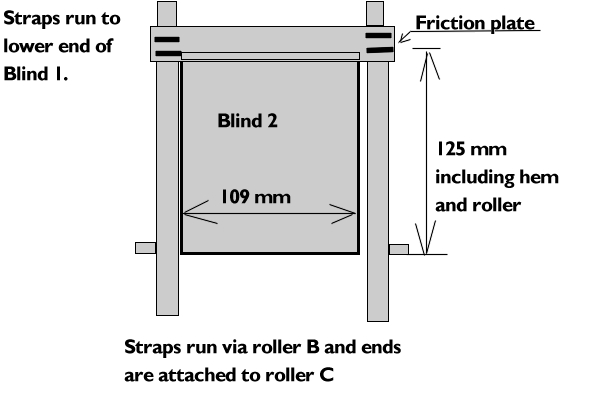
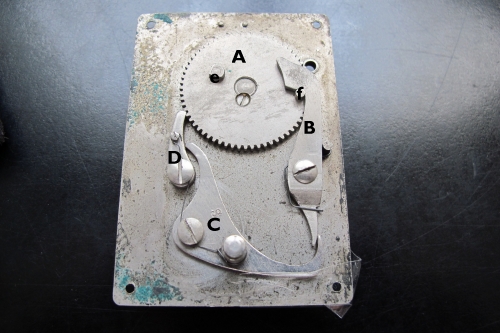
The focal plane shutter winding assembly after exposure. A= Winding wheel. B is intermediate level. C is release level coupled to the release knob and D is release pawl holding winding wheel.
f stops the exposure time when Instant mode is selected. e stops the exposure when Time is selected.
